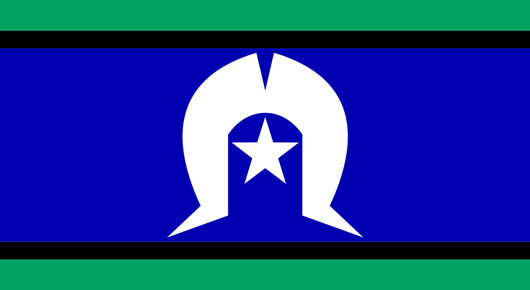Australia
Info
- Population: 26,638,544 (as of June 2023) [1]
- Size: 7,688,287 km2 (sixth largest country). [2]
- Capital: Canberra (Australian Capital Territory)
- Oldest civilisation: 65,000 years (Aboriginal). [3]
- Colonised (by British): 1788 (flag raised 26 January), although Capt. James Cook first arrived 19 April 1770, and the First Fleet actually arrived a few days before the flag was first raised.
- Federation: 1 January, 1901.
- Political System: Representative democracy, constitutional monarchy and federation of states. [4]
- States: 6 (New South Wales, Queensland, Victoria, Tasmania, South Australia & Western Australia).
- Internal Territories: 3, although most recognise only 2 (Australian Capital Territory & Northern Territory, which are both self-governing. Jervis Bay Territory, which is not self-governing, is also an Australian territory).
- External Territories: 7 (Ashmore and Cartier Island, Coral Sea Islands, Christmas Island, Cocos (Keeling) Island, Norfolk Island, Heard Island and McDonald Islands, & Australian Antarctic Territory).
- Longest River: The longest single river is the River Murray at 2,508km (this is the river I live near). When the longest contributing rivers/waters are added (Darling River, the Culgoa, Balonne & Condamine) this becomes the longest waterway at 2,740km. [5]
Facts
Australia is located in the southern hemisphere, which means when the USA and Europe are experiencing winter, Australia is experiencing summer. Our maximum temperature on record is 50.7°C (123.26°F), with the lowest being -23°C (-9.4°F). [6]
Australia is also home to some of the deadliest snakes and spiders in the world. The Sydney Funnel-web spider is ranked as the most venemous spider in the world. The Australian Red Back Spider is at number 3. By comparison, the Black Widow is much farther down the list! The Sydney Funnel Web spider will rear up its front legs and fangs to strike, with the fangs being strong enough to puncture a toe nail.
As for snakes, of the 20 most venemous snakes in the world, Australia is home to the 1st, 2nd, 3rd, 4th and 13th, being the Inland Taipan, Eastern Brown, Coastal Taipan, Mainland Tiger and Common Death Adder snakes. The Red-bellied Black Snake are also highly venemous. To give some perspective, the Mojave Rattlesnake is at number 8, and the King Cobra at number 11. [7]
Add to this sharks (especially the Great White), crocodiles, Blue-ringed Octopus, the Box Jellyfish (considered the deadliest jellyfish and can kill within 5 minutes) and the Irukandji, and Australia has plenty of things that really want to kill you, although any local will tell you the Magpie during breeding season is the one to be most scared of!
Most native animals are protected species in Australia, including all snakes, some sharks (including the Great White and Grey Nurse), and crocodiles (saltwater and freshwater). This means that, unless there is an immediate danger, they can not be killed or harmed. Some exceptions may apply to the First Nations people.
Flags
The flags below are the Australian National Flag or ANF (left) and the two flags of the First Nations people of Australia, being the Aboriginal flag on the right top, and Torres Straight Islander flag on the right bottom. While the two First Nations flags represent the specific indigenous nations, the ANF represents the entire Commonwealth of Australia.
 |
  |
First Nations
The decendents of the people who inhabited Australia around 65,000 years before colonisation by the British are known as the First Nations people, and consist of two groups: the Aboriginal and the Torres Straight Islander peoples.
Of the Aboriginal peoples, many do not realise they were not one single group of people but rather they comprised around 250 individual nations (Mobs) each with their own culture, beliefs, language and traditions. Each Mob comprised a number of family groups (Clans). As each Mob had its own language, many people spoke more than one language to help them communicate with the neighbouring Mobs. [8]
Among these Mobs is the one my wife’s ancesters come from, the Wiradjuri people of central west New South Wales (NSW). This is the largest Mob in central NSW bordered by the Macquarie River (Wambool), Lachlan River (Kalari) and the Murrumbidgee River (Murrumbidjeri), and is the second largest Mob in the whole of Australia. [9]
Torres Straight Islander peoples come from the numerous islands located between the Australian mainland and Papua New Guinea. It is where the Indian Ocean meets the Pacific Ocean and contains around 133 islands, with some 38 being inhabited. There are three distinct dialects in the Torres Straight. [10]
References
1 Australian Bureau of Statistics (June 2023), National, state and territory population, ABS Website, accessed 29 December 2023. Return
2 Geoscience Australia (December 2023), Australia’s size compared, GA Website, accessed 29 December 2023. Return
3 National Museum Australia (January 2022), Evidence of first peoples, NMA Website, accessed 29 December 2023. Return
4 Parliamentary Education Office (n.d.), Australian system of government, PEO Website, accessed 29 December 2023. Return
5 Geoscience Australia (August 2023), Longest rivers. GA Website, accessed 29 December 2023. Return
6 Bureau of Meteorology (September 2022), Rainfall and temperature records. BoM Website, accessed 29 December 2023. Return
7 Bryan, M. (December 2023), Most Venomous Snakes. Facts.net Website, accessed 12 January 2024. Return
8 Evolve communities (2020), Aboriginal Diversity - Why One Size Does Not Fit All. Evolve communities Website, accessed 6 January 2024. Return
9 Fisher, R. (August 2023), Wiradjuri cultural objects from Peak Hill, NSW. Australian Museum Website, accessed 6 January 2024. Return
10 Torres Shire Council (n.d.), About the Torres Strait. TSC Website, accessed 6 January 2024. Return
Acknowledgment of Country
I acknowledge Traditional Owners of Country throughout Australia and recognise the continuing connection to lands, waters and communities. I pay my respect to Aboriginal and Torres Strait Islander cultures; and to Elders past and present.